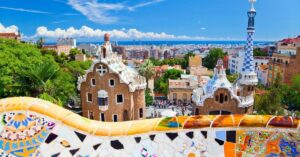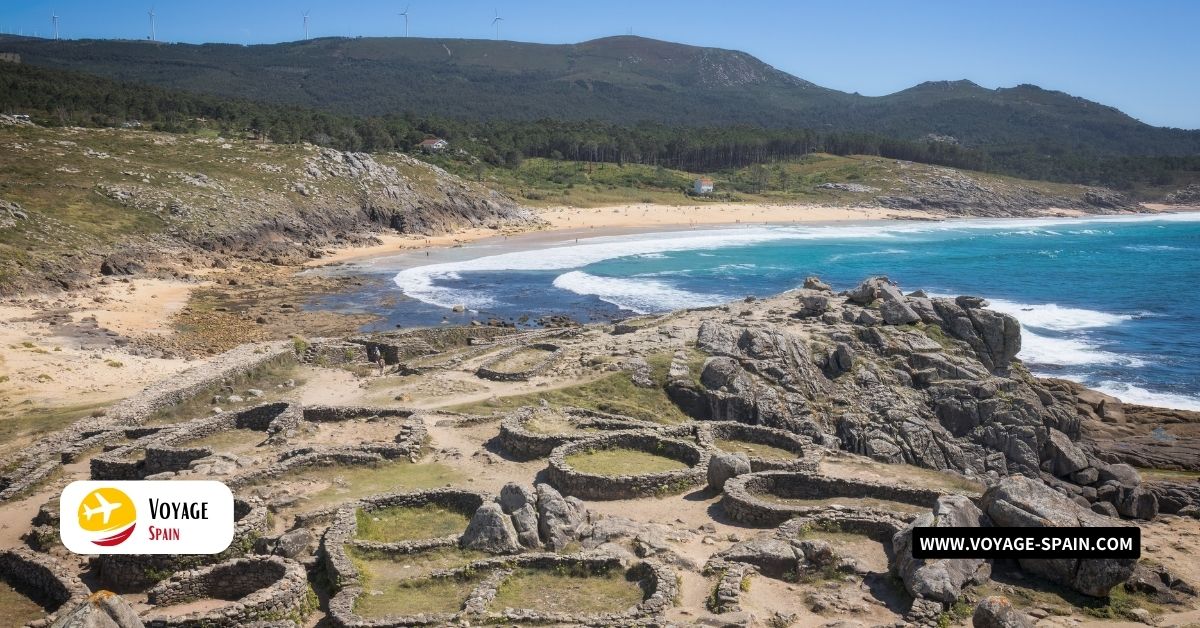Introduction
Lighthouses have long served as beacons for sailors, guiding them through treacherous waters. In both past and present, these structures stand as symbols of safety and navigation, marking Galicia’s shores against the relentless sea.
The Role of Lighthouses in Galicia
Galicia’s lighthouses have stood guard over its coast for centuries. Their beams have pierced the fog, guiding ships through dangerous passages. These structures were lifelines, preventing countless shipwrecks in a region known for its challenging seas.
Beyond their practical role, lighthouses are woven into Galicia’s fabric. They’re landmarks of cultural significance, symbols of resilience and guardianship. Each one tells a story of Galicia’s maritime history, echoing tales of sailors, storms, and survival.
Their presence along the coastline has shaped the region’s identity. Lighthouses are not just functional; they’re a proud part of Galicia’s heritage, marking the bond between the land and the sea.
Iconic Lighthouses of Galicia
Galicia’s coastline is dotted with beacons of history and culture. These iconic lighthouses not only guide ships to safety but also attract those keen to explore their stories. Let’s dive into some of the most remarkable lighthouses that have stood the test of time in this scenic region.
Faro de Hercules (Tower of Hercules)
- Location: Standing proudly on a peninsula near A Coruña, this ancient Roman lighthouse overlooks the North Atlantic coast.
- Historical Background: Built in the 2nd century and renovated in 1791, it’s the oldest operating lighthouse in the world.
- Architectural Details: The structure features a square tower and a staircase leading to the top, standing 55 meters tall.
- Technological Aspects: Initially, it used a system of wood-burning fires. Now, it’s equipped with modern lighting technology.
- Cultural Impact: Its mythological origins and historical significance have made it a UNESCO World Heritage site.
- Current Status: Still operational, it offers visitors a chance to climb up and enjoy panoramic views.
Faro de Finisterre
- Location: Perched on the rocky coast of Cape Finisterre, this lighthouse marks what was once believed to be the end of the world.
- Historical Background: Constructed in 1853 to aid navigation through these perilous waters.
- Architectural Details: The lighthouse is notable for its octagonal tower, rising 17 meters above the cape.
- Technological Aspects: Equipped with a powerful lamp that casts light far into the sea, guiding ships safely.
- Cultural Impact: The cape and its lighthouse are steeped in legends, often visited by pilgrims completing the Camino de Santiago.
- Current Status: It remains an active guide for vessels, with areas accessible to tourists seeking breathtaking sea views.
Faro de Islas Cíes
- Location: Located on the highest point of the Cíes Islands, offering stunning views of the Atlantic and the Rías Baixas.
- Historical Background: Built in the 19th century to navigate the entrance to the Vigo estuary.
- Architectural Details: Its design is simpler, focusing on functionality, with a modest height of 24 meters.
- Technological Aspects: Modernized over the years, it now features automated lighting systems.
- Cultural Impact: The lighthouse and islands are part of the Atlantic Islands of Galicia National Park, beloved for their natural beauty.
- Current Status: Still operational, the lighthouse is a highlight for visitors to the national park, though access is regulated to protect the environment.
Highlighted Lighthouses
Galicia’s coastline is a testament to the enduring power of lighthouses, not just as navigational aids but as historical and cultural landmarks. From ancient Roman constructions to modern marvels, each lighthouse tells a unique story. Let’s highlight some standout beacons that illuminate this region’s rich maritime legacy.
Tower of Hercules
This ancient lighthouse’s roots trace back to the Roman Empire, making it a bridge between past and present. Its status as a UNESCO World Heritage site underscores its global importance. Standing near A Coruña, it’s a symbol of enduring guidance across the ages.
Cabo Vilán Lighthouse
Located on the perilous Costa da Morte, Cabo Vilán was the first lighthouse in Spain to shine its light powered by electricity in 1896. Its vital role in ensuring the safety of ships navigating these treacherous waters marks a significant point in lighthouse history.
Faro de Finisterre
Faro de Finisterre holds a mythical place in the hearts of many. At what was once considered the edge of the world, it’s a beacon for pilgrims completing the Camino de Santiago. This lighthouse embodies the intersection of faith, history, and the awe-inspiring power of nature.
Other Notable Mentions
- Faro de Punta Nariga: Known for its modern, sculptural design that blends with the natural landscape.
- Faro de Islas Cíes: Guards the entrance to the Ría de Vigo, part of the Atlantic Islands of Galicia National Park, celebrated for its breathtaking views and pristine environment.
- Faro de Ortigueira: Stands as a lesser-known gem, offering serene beauty and a glimpse into the quieter side of Galicia’s maritime culture.
Conservation and Tourism
Galicia’s lighthouses are not just navigational aids; they’re treasures of cultural and historical significance. Efforts to preserve these venerable beacons are underway, ensuring they stand tall for future generations. Restoration and maintenance projects focus on keeping the architecture intact while updating the lighting technology for continued maritime safety.
As pillars of history, these lighthouses have become must-visit spots for tourists. They offer unique glimpses into Galicia’s maritime past, stunning views of the rugged coastline, and insights into the life of a lighthouse keeper. Visiting these sites supports local economies, with entrance fees and guided tours contributing to the conservation efforts.
Moreover, these iconic structures play a vital role in promoting cultural heritage awareness. Through educational programs and museum exhibits within the lighthouses, visitors learn about the region’s maritime history, the technological evolution of lighthouses, and their role in safeguarding sailors’ lives. This blend of preservation and tourism ensures that Galicia’s lighthouses continue to be beacons of cultural pride.
The Future of Galicia’s Lighthouses
The future of Galicia’s lighthouses looks bright, even as navigation technology advances. While modern GPS systems guide ships today, these historic beacons continue to symbolize safety and heritage. They’re adapting, finding new life beyond their traditional roles.
Projects to enhance their appeal are in motion. Plans include transforming some lighthouses into museums, showcasing maritime history and lighthouse technology. Others are focusing on creating immersive guided tours, allowing visitors to step into the shoes of a lighthouse keeper for a day.
These initiatives ensure that Galicia’s lighthouses remain relevant. They’re becoming educational hubs, offering insights into past and present maritime navigation. As technology evolves, so does the role of these iconic structures, bridging the gap between history and modernity.
Conclusion
Galicia’s lighthouses have long stood as guardians of the coast, guiding mariners through treacherous waters. Their beams of light, a symbol of safety, have become landmarks of cultural significance. These structures blend the practical with the historical, serving as navigational aids and monuments to maritime heritage.
The preservation of these lighthouses is crucial. It’s about keeping the stories of sailors, storms, and survival alive for those who come after us. By maintaining these beacons, we honor our history and ensure that future generations can learn from and be inspired by them.
FAQs
Q1: What’s Galicia Spain Famous For?
Galicia is famous for its rugged coastline, the Camino de Santiago, Celtic culture, seafood, and Albariño wine.
Q2: What Is An Interesting Fact About Galicia?
Galicia has its own co-official language, Galician, and a notable Celtic heritage.
Q3: What Is The Oldest Lighthouse In Spain?
The Tower of Hercules in A Coruña, built in the 1st or 2nd century AD, is Spain’s oldest Roman lighthouse still in use.
Q4: What Is The History Of The Lighthouse Light?
Lighthouse lighting evolved from ancient fires to modern electric lights, significantly enhanced by the 19th-century invention of the Fresnel lens.
Q5: Who Invented Lights For Lighthouses?
Augustin-Jean Fresnel revolutionized lighthouse lighting in the 1820s with the Fresnel lens, focusing light into a powerful beam.
Q6: How Do Lighthouses Make Light?
Modern lighthouses use electric bulbs and Fresnel lenses or optical systems to project a focused beam across the sea.












